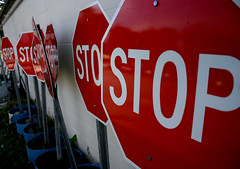 Have you ever made a sales call, presented what was an obvious advancement in terms of innovation, quality, efficiency and price, only to walk away without the sale?
Have you ever made a sales call, presented what was an obvious advancement in terms of innovation, quality, efficiency and price, only to walk away without the sale?
If so there’s a good chance you’ve met the competitor known as habit. Habit, even a costly one, can stop a buyer from switching to your product more thoroughly than any competitor’s feature set or low ball price ever dared to.
When you encounter a prospect or market segment that’s unwilling to listen to logic you must be prepared to introduce a specific approach aimed at teaching them how to switch. In some cases the fear of change, unknown or known pain of switching, or overall risk raises the selling bar to the point where most give up. Implement the following and you might find a rich new market for your products and services.
Acknowledge the habit
The first step is to come to grips with the problem yourself. Stop trying to convince people why they should switch and start understanding what’s keeping them locked where they are. You can’t help them solve the problem if you don’t understand and acknowledge it yourself.
How much does that habit cost?
Once you understand what’s holding them back you can go to work on defining exactly how much their fear or indifference is costing them. When you can quantify just how much their behavior is costing them in dollars and cents you’ll stand are far greater chance of getting their attention. Look to your existing success stories and poll your existing client base to come up with hard and soft numbers that reflect the benefit of switching to your product or solution. When you can demonstrate that not switching is costing $9822 while switching only costs $3588, you’ll raise at least one eyebrow.
Build a case of what’s in it
Since your fighting the laws of physics here you’ve got to create even more force to overcome the inertia of a reluctant buyer. Focus on what’s in it for them. Talk to your customers and get a good feel for the 3-4 “real” (meaning not the stuff you put in your marketing brochure) benefits your customers experience. Don’t worry about how simple you think they are, if your customers are telling that’s why they really switched, believe it’s why others will as well. I switched credit cards one time because the company showed me how much more detailed their online statements were than anyone else. That’s why I switched – not because I could get a cheap plastic cooler for every $1000 I spent.
Easy to switch offer
Once you’ve helped them realize the real cost and built a benefit rich case, you’re almost there. You’ve also got to remove the final barrier known as “what if.” What if evaporates with an over the top guarantee to switch them back and pay for all disruption if . . .it goes away when your throw in all set-up, training and refining at no cost . . . it goes away when you implant your super responsive customer service rep in their business for 90 days . . . it goes away when you offer to get paid only after they experience the proposed savings. So, what’s your easy to switch offer.
Habit a darn fierce competitor, but one that won’t stand up to your habit busting strategy.
Image credit: adobemac

